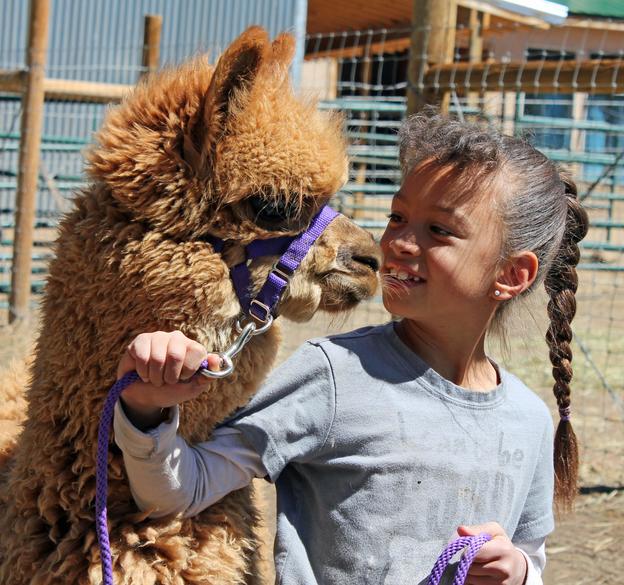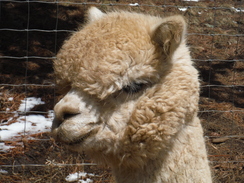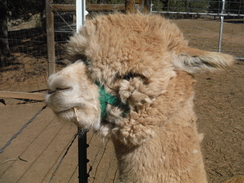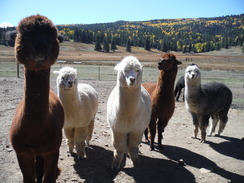Alpaca Info
Alpacas, members of the camel family, come from Peru, Bolivia, and Chile. The ancestral camel migrated to South America more than 4000 years ago where it adapted in the Andean mountain environment into two species, the guanaco and the vicuna. Through selective breeding, the Inca Indians developed these wild camels into the llama and the alpaca. While llamas were selected for strength, the smaller alpacas were bred for their fine, dense, soft fleece which was regarded as the fiber of Incan royalty.
There are 2 types of alpaca, both used as fleece producers, Huacaya (fuzzy ones) and Suri (mop-like in appearance). Alpacas can live 20 years or more. Their average gestation period is 11.5 months. Babies, called cria, usually weigh 15 to 23 pounds at birth and are weaned in about 6 months. Adult alpacas generally grow to 3 feet at the shoulder and 4 ½ to 5 feet at the top of their head; they usually weigh between 105 and 175 pounds.
They were first imported to the United States in 1984 and the national herd now numbers approximately 125,000. The gentle, intelligent, curious alpaca is hardy and easy to care for needing a limited acreage while producing a good return on investment.
There are 2 types of alpaca, both used as fleece producers, Huacaya (fuzzy ones) and Suri (mop-like in appearance). Alpacas can live 20 years or more. Their average gestation period is 11.5 months. Babies, called cria, usually weigh 15 to 23 pounds at birth and are weaned in about 6 months. Adult alpacas generally grow to 3 feet at the shoulder and 4 ½ to 5 feet at the top of their head; they usually weigh between 105 and 175 pounds.
They were first imported to the United States in 1984 and the national herd now numbers approximately 125,000. The gentle, intelligent, curious alpaca is hardy and easy to care for needing a limited acreage while producing a good return on investment.
Friday, April 16, 2021




